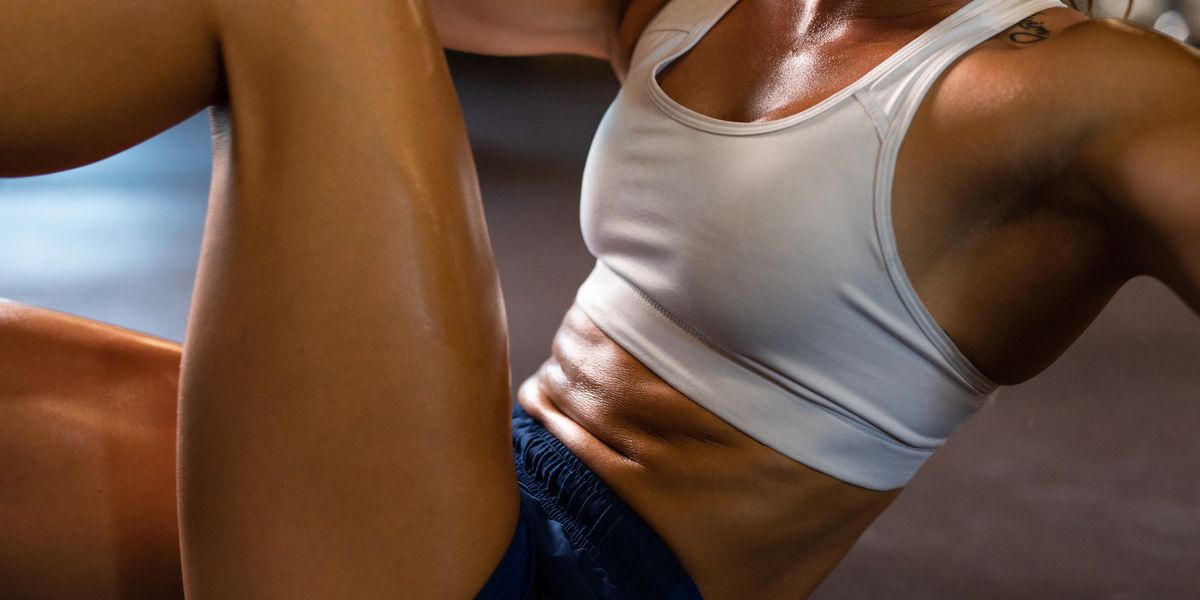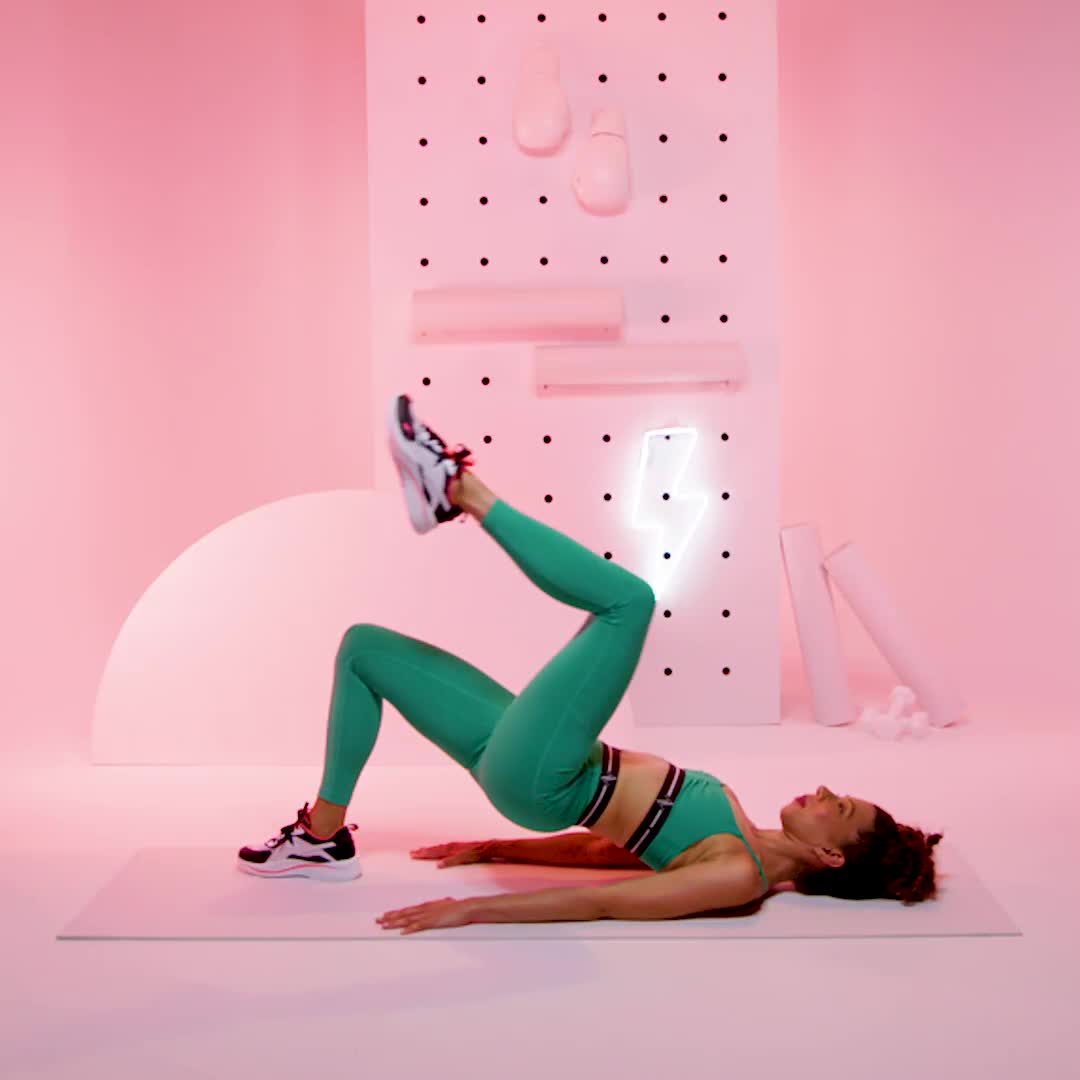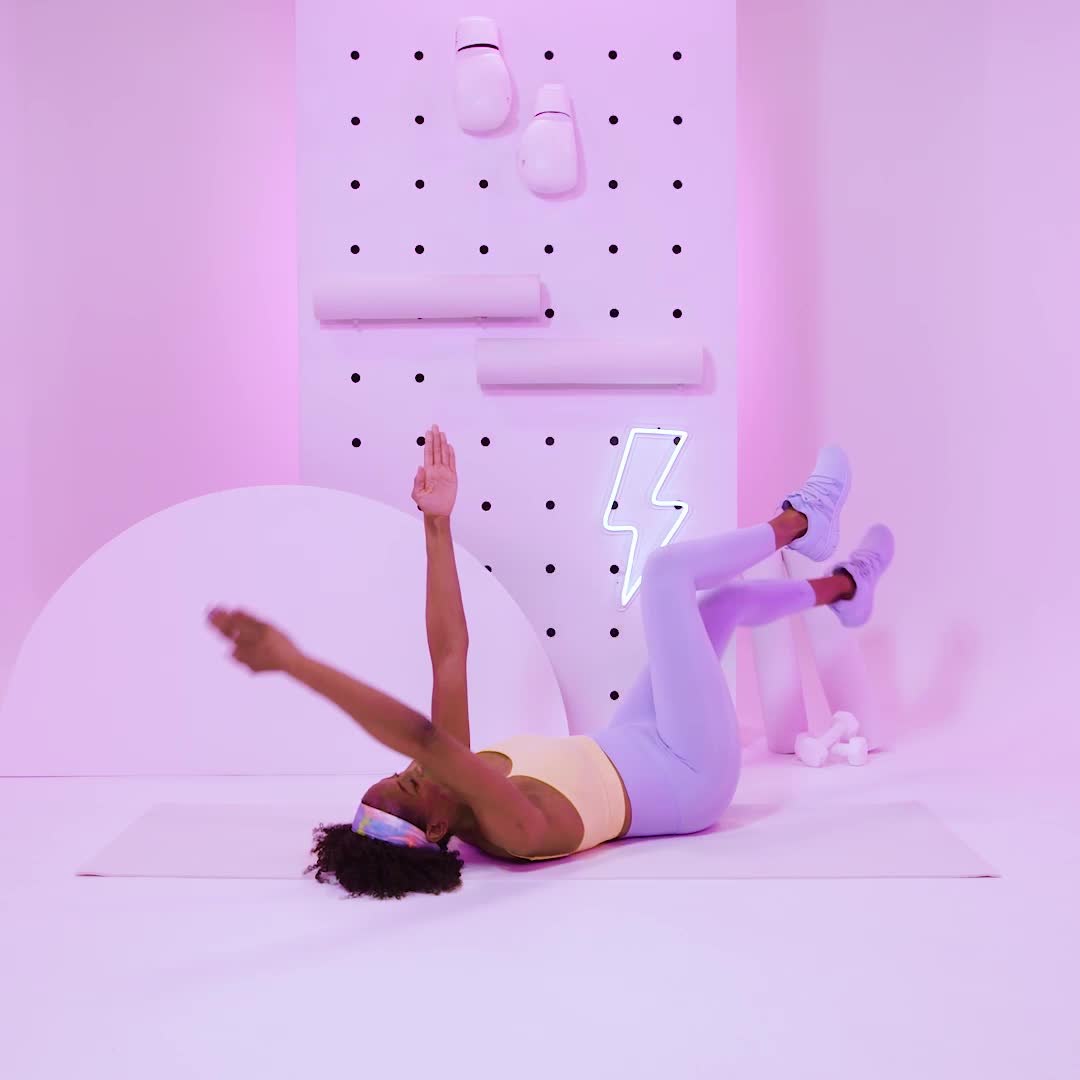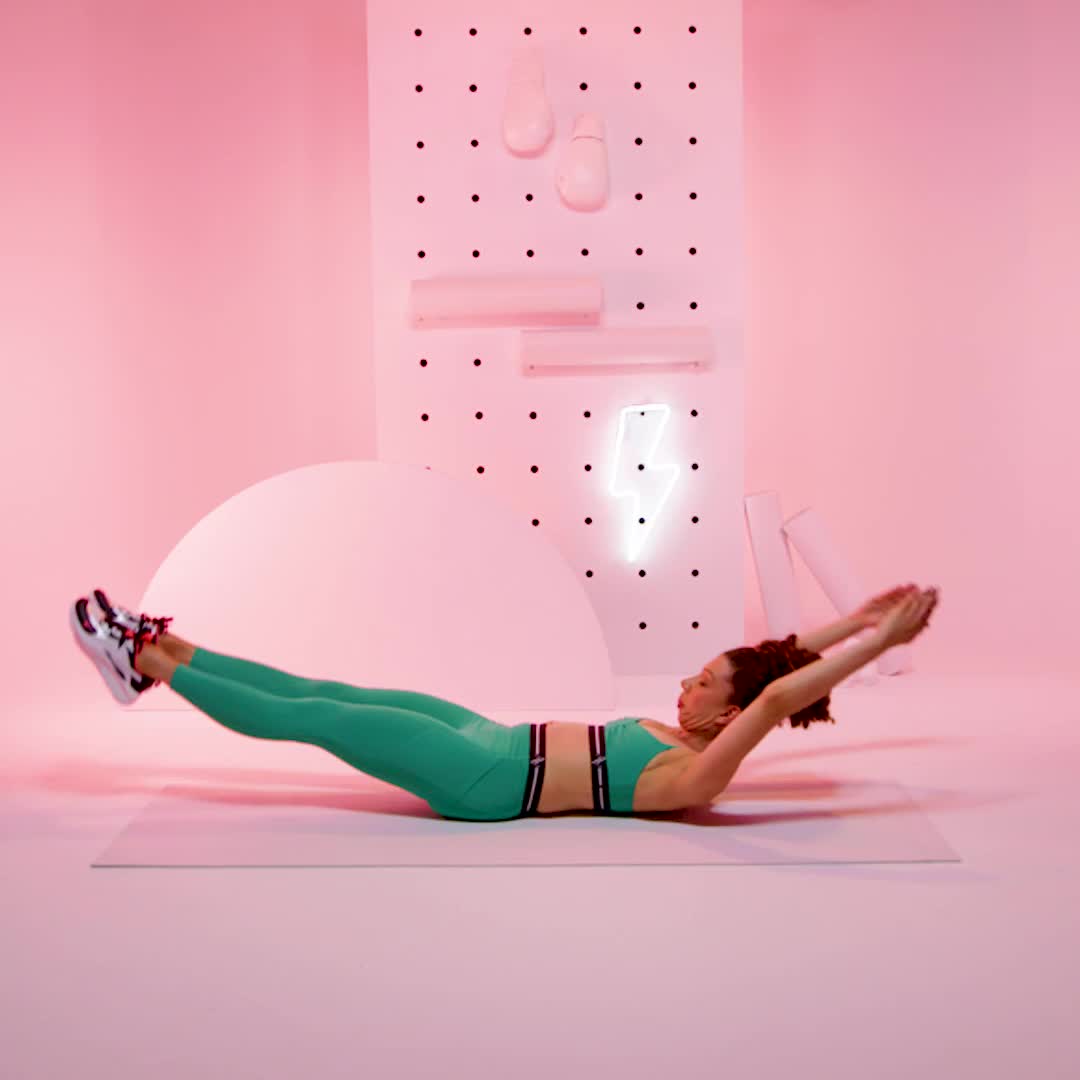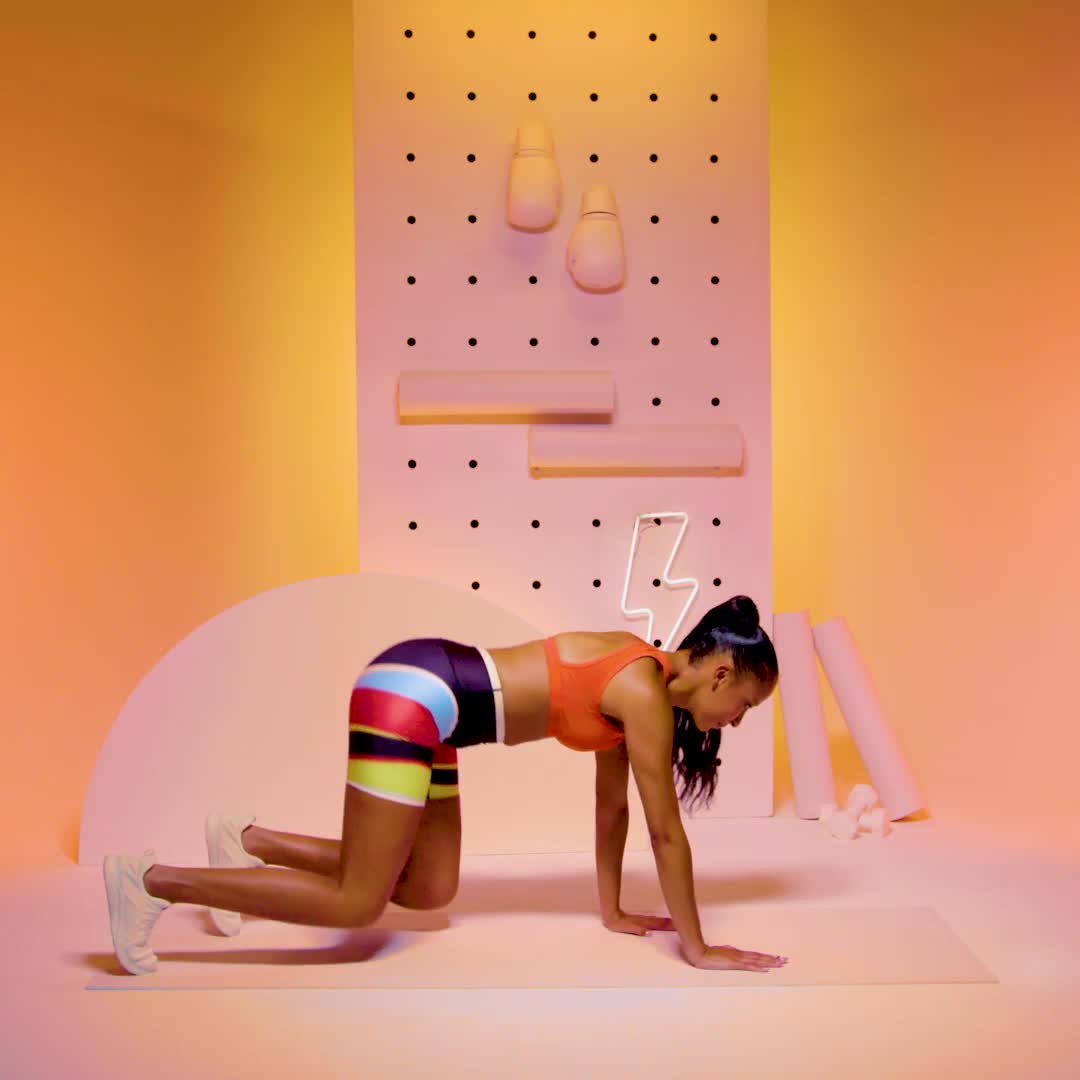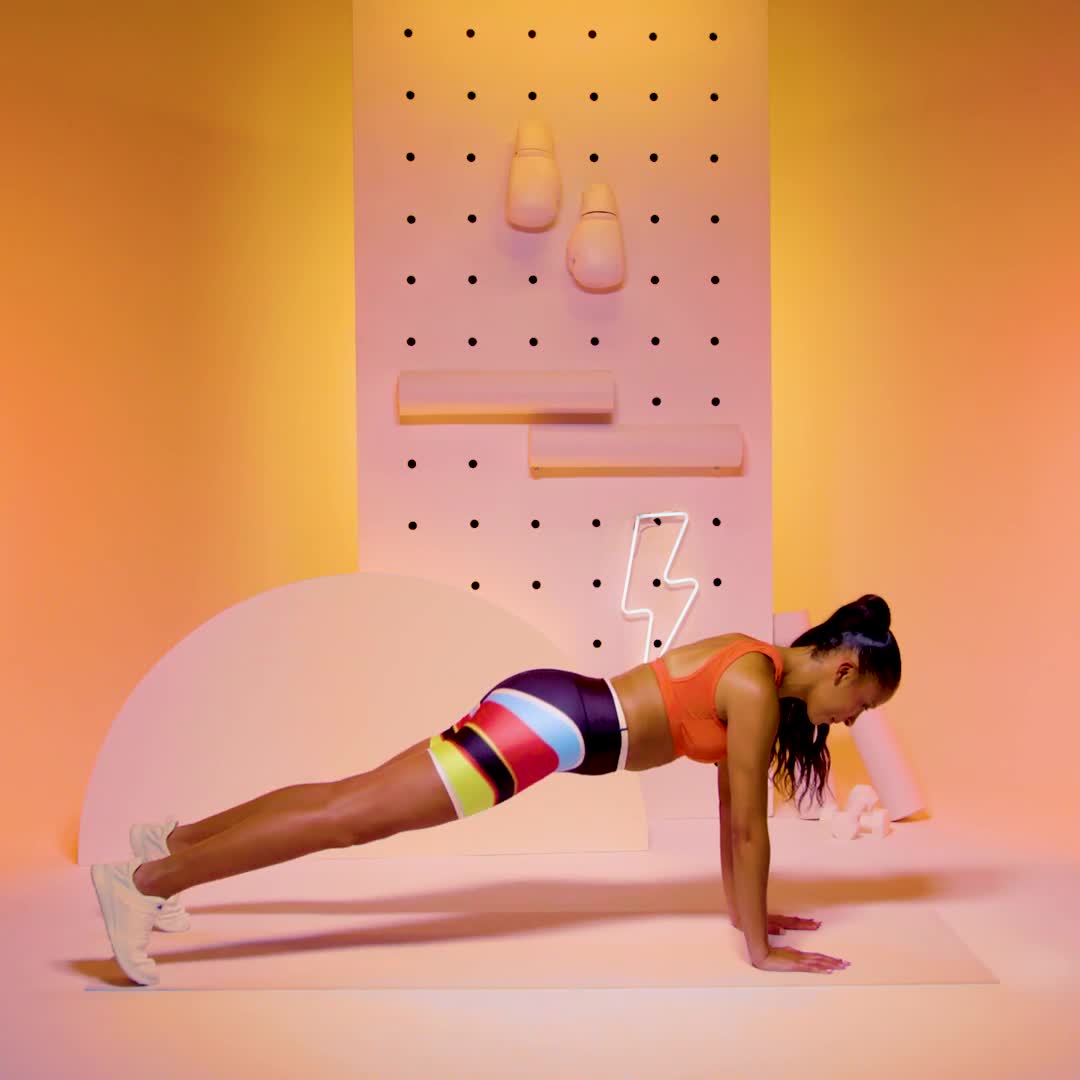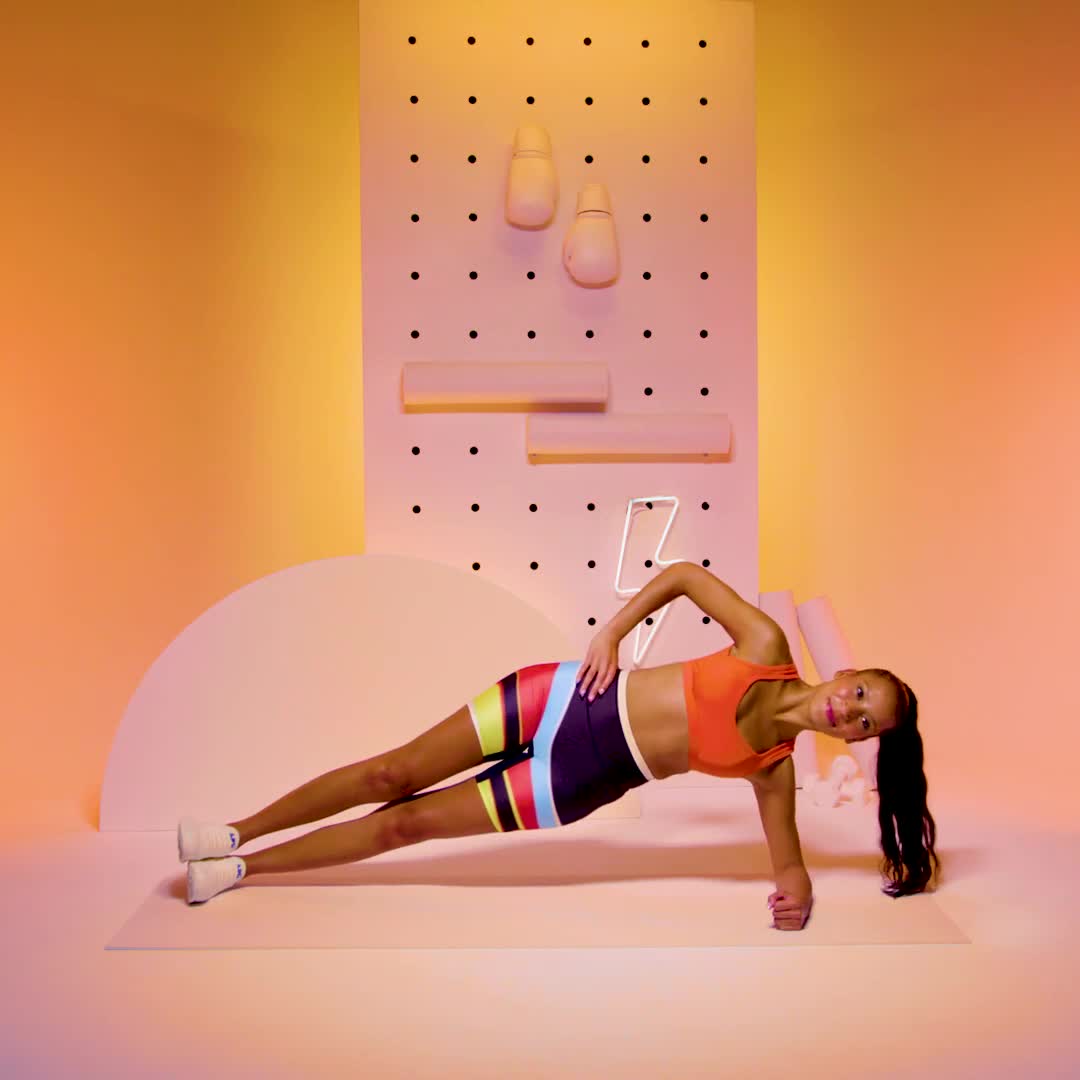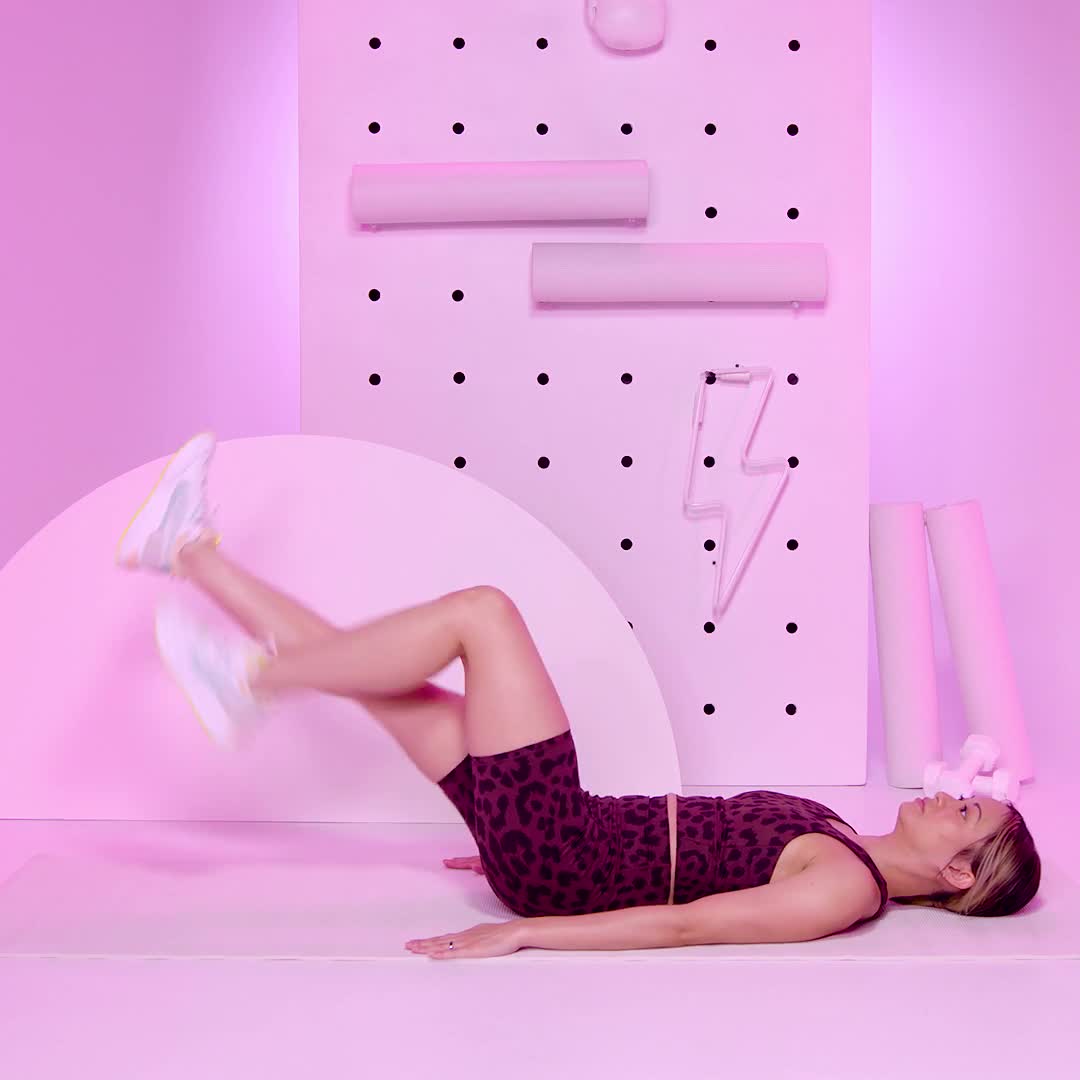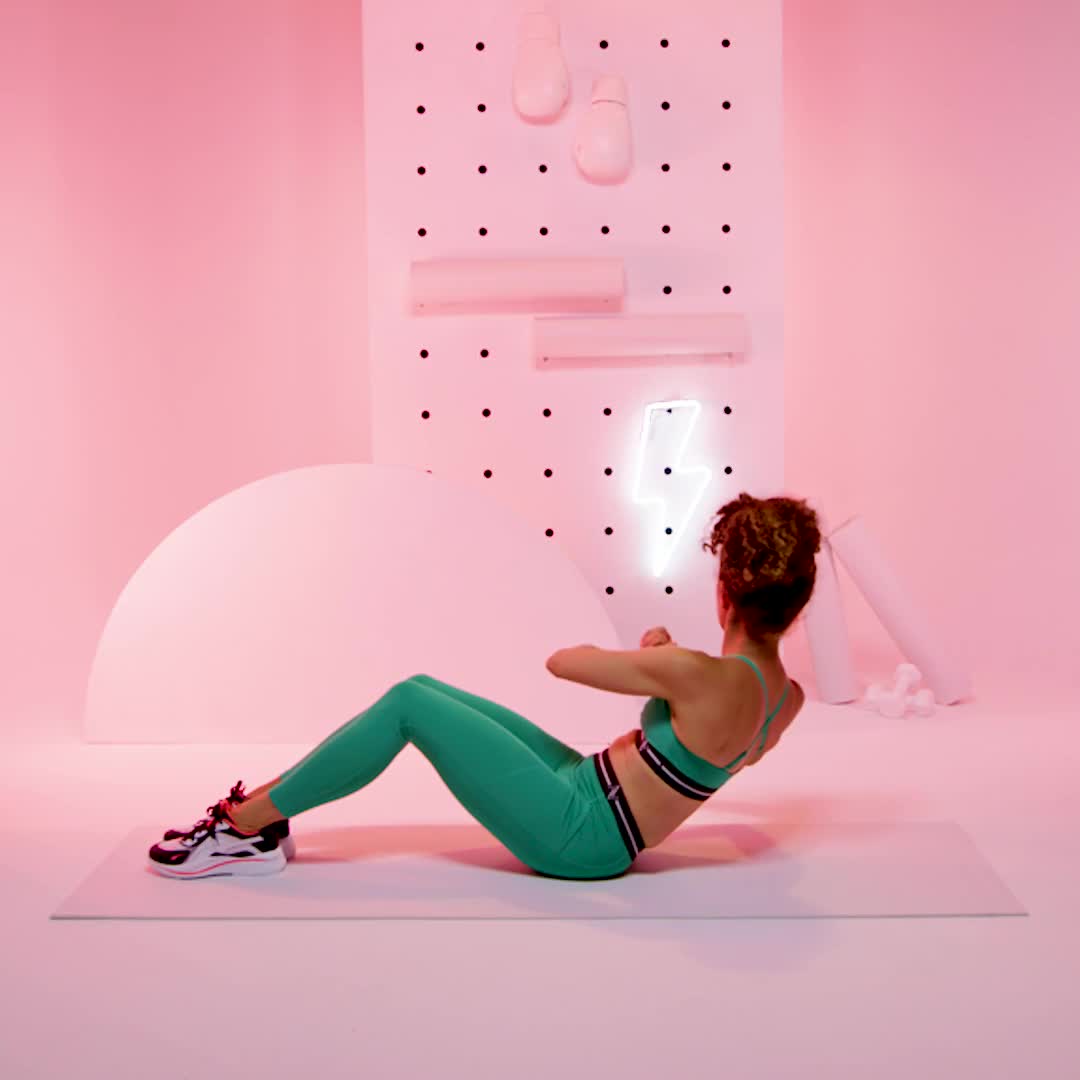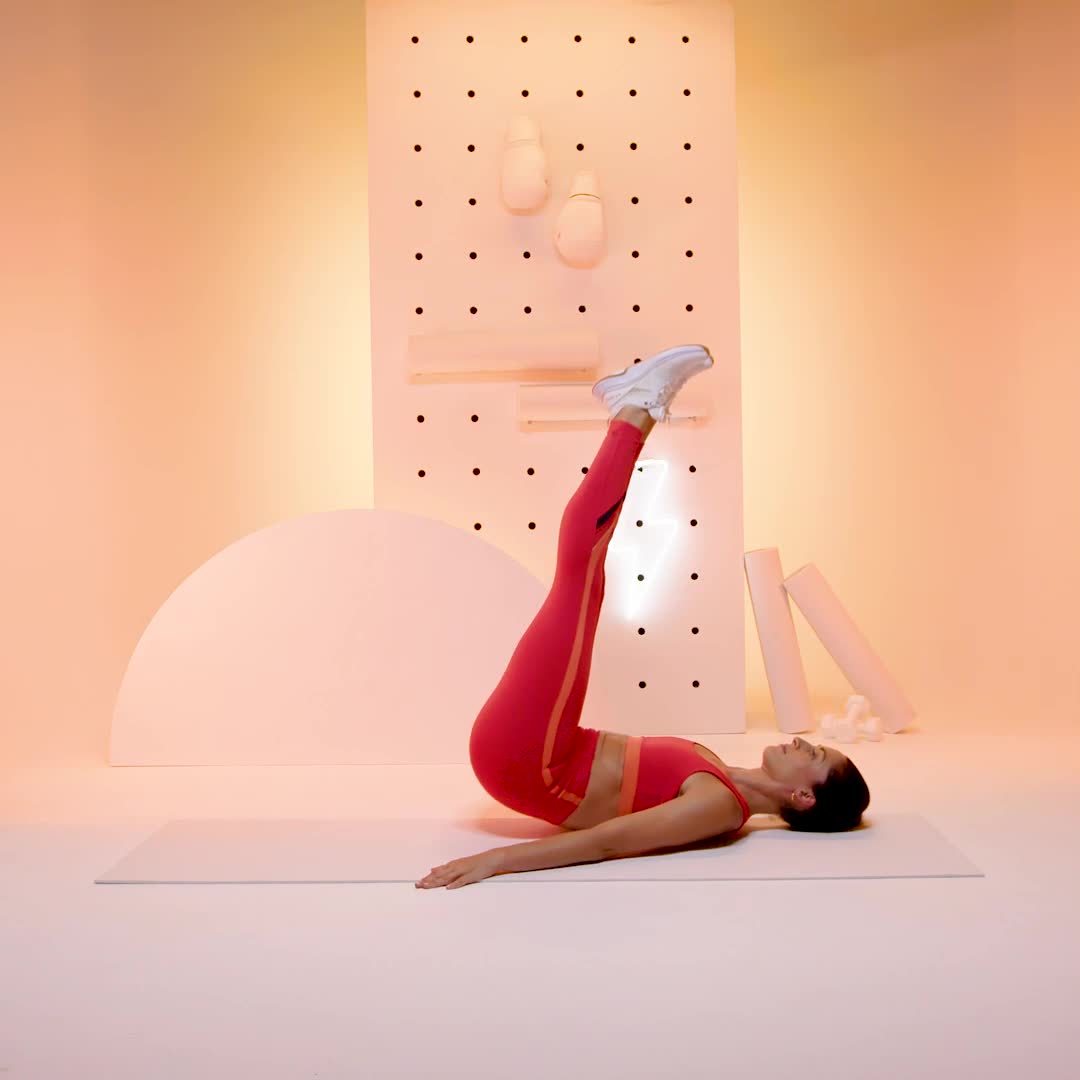You’ve probably familiar with the abs muscles—the ones you see poppin’ on sculpted celebs like J.Lo or Halle Berry, but there’s way more to core strength than those visible six-pack muscles. Behind the scenes, your deep core plays a crucial role in posture, balance, and injury prevention—yet it’s often overlooked.
So, what exactly is your deep core? Your core is made up of both ‘mover’ muscles, which power big movements, and ‘stabilizer’ muscles, which provide support, says Jessica Chellsen, DPT, CSCS, founder of Vibrant Coast Physical Therapy and Wellness. While the movers include your rectus abdominis (six-pack muscles), obliques, and hip muscles, the deep core refers to the stabilizers that keep everything strong and steady.
Both muscle groups are important, but the deep core supports your spine, improves posture, protects internal organs, and facilitates overall movement, says Marcel Dinkins, CPT, a New York-based personal trainer and Peloton Tread instructor. (It also plays a role in sexual function, reducing lower back pain, and improving urinary incontinence, but more on that later.)
Here’s the thing: whether you realize it or not, you likely already train your deep core muscles, she adds. “If you’ve ever performed a plank, squat, glute bridge, pelvic tuck, or any anti-rotation exercise, you’ve already been doing deep core exercises, all of which are the building blocks for other more advanced movements,” she says. “For example, if you want to be able to perform a proper pushup, having the core strength necessary to keep your core braced can be gained with plank holds or goblet squats, both of which challenge your deep core stabilizers.”
Ready to keep going? Here are the 10 best deep core exercises that you can incorporate into any routine, according to trainers.
Meet the experts: Jessica Chellsen, DPT, CSCS, is a doctor of physical therapy, strength and conditioning specialist, and founder of Vibrant Coast Physical Therapy & Wellness. Marcel Dinkins, CPT, is a New York-based personal trainer, Peloton Tread instructor, and former Army officer.
What are the deep core muscles?
The deep core consists of four main muscles—the diaphragm, pelvic floor, multifidus, and the transverse abdominis—that work together to stabilize and support your spine, and have the following functions, says Chellsen.
- Diaphragm: Located under your lungs at the top of your core, the diaphragm allows you to inhale and exhale.
- Pelvic floor: Located at the base of the core, the pelvic floor supports your internal organs and assists in sexual function.
- Transverse abdominis: The deepest abdominal muscle responsible for core stability, it acts as a “muscular corset,” to support and protect the spine.
- Multifidus: This small, narrow muscles is attached to your spine and is responsible for spinal stability.
Why strengthen the deep core?
Deep core exercises do more than just strengthen your abs and support good posture—they build endurance and stability throughout your trunk (chest, abs, back, and pelvis), reducing strain on your spine and improving coordination for activities like running, jumping, and lifting, says Chellsen.
Another major perk? A stronger pelvic floor. “The pelvic floor consists of three layers of muscle that need to be strong for bladder and bowel control, organ support, sexual function, and even childbirth,” says Chellsen. Deep core exercises help by strengthening these muscles and improving coordination with the transverse abdominis, diaphragm, hips, and inner thighs, she says.
They’re also great for preventing lower back pain, and are especially beneficial during pregnancy and postpartum, adds Chellsen. (Always consult with your healthcare practitioner before adding new exercises to your routine when pregnant.)
More perks of doing pelvic floor exercises include:
How often should you do deep core exercises?
The frequency of deep core exercises can vary based on your goals, ability, and any injuries, but generally speaking, the sweat spot is around three times a week, says Dinkins.
In terms of when to do deep core exercise, Chellsen recommends adding them at the end of your workout. However, it’s a good idea to incorporate breathwork and pelvic floor exercises during your warm-up to prep your body for movement, especially if you’re returning to exercise postpartum, adds Dinkins.
Are there any risks to deep core exercises?
Generally speaking, there aren’t any serious risks associated with deep core exercises, as long as you focus on proper form, says Chellsen. However, if your form is compromised, you may experience soreness in your lower back, she adds. If you experience persistent pain, Chellsen recommends checking-in with a pelvic floor physical therapist for specific guidance.
Additionally, if you’re holding your breath during deep core exercises, you may notice increased pressure on your pelvic floor or abdominal wall, says Chellsen. To nix the issue, remember to prioritize deep breathing. And if you’re pregnant or just returning to core exercises postpartum, it’s especially important to focus on proper form and breathing, and modify the exercises when needed, she adds. (And, don’t forget to talk to your doctor first in this case!)
Tips For Maximizing Deep Core Exercises
First things first: Focus on your breath. “With every ‘hard’ part of the exercise, you should exhale through pursed lips, like you’re blowing through a straw,” says Chellsen. “A lot of people tend to hold their breath [during deep core exercises], but this will increase your intra-abdominal pressure, which can put increased strain on your pelvic floor and abdominal wall,” she says. (FYI: Intra-abdominal pressure is increased pressure in your abdominal cavity which happens when you hold your breath while exerting yourself, says Chellsen, and it lead to excess pressure on your pelvic floor.)
How you recruit your deep core is also important, says Chellsen. “It’s very common for women to ‘push’ their belly up when doing abdominal exercises, which is known as ‘coning’ or ‘doming,’ but instead, you should think of ‘zipping up’ your core,” she says. “Think of drawing your pubic bone toward your breastbone and drawing your hip points together.”
Curious if you’re activating your deep core correctly? Chellsen says to look down at your stomach. “Your belly button should be drawing down toward your spine versus pushing out away from you,” she says. “If you place your fingers inside your hip points, you should feel a similar activation as when you cough.”
10 Deep Core Exercises
Instructions: To incorporate deep core exercises into your current workout routine, choose three moves below. Perform 10 to 12 reps of each (or 30 to 60 seconds when indicated), then continue on to the next exercise. Once you’ve completed all movements, rest for up to one minute then repeat again for two total rounds. For an isolated deep core workout, choose five to six moves below, performing 10 to 12 reps of each, for three total rounds.
Banded Bird-Dog
Why it rocks: This exercise works your deep core as you create stability while moving your limbs, says Chellsen. You’ll also feel a burn in your glutes when you lift your leg.
How to:
- On all fours, stack hands directly under shoulders, knees below hips, and wrap a resistance band around both feet.
- Keeping torso still and core engaged, simultaneously extend right arm straight out in front of body and left leg straight back behind body.
- Bring right elbow and left knee in beneath torso to touch.
- Repeat on the opposite side. That’s 1 rep.
Pro tip: Avoid arching or extending your back as you lift your leg. Instead, focus on engaging your glute.
Glute Bridge March
Why it rocks: This move fires up the deep core while stabilizing your abdominals to resist the rotation as you alternate lifting each leg, says Chellsen. Your glutes will also kick into high gear while you maintain the bridge position.
How to:
- Lie on back with legs bent, heels under knees, feet flat on floor.
- Extend arms over your chest, palms facing.
- Raise hips so body forms a straight line from shoulders to knees.
- Brace abs and lift right knee over hip, maintaining 90-degree angle of that leg.
- Hold for a moment, then lower right foot.
- Repeat with the left. That’s 1 rep. Continue alternating.
Pro tip: Lift your hips off the ground and maintain a straight line from shoulders to knees while in the bridge position. Avoid overarching your back.
Deadbug
Why it rocks: Deadbugs target the deep core muscles along with the hip flexors to improve core stability and control while moving your limbs, says Dinkins. You’ll also avoid possible neck strain since your head remains on the ground.
How to:
- Lie on back with arms extended toward ceiling in line with shoulders and legs bent to 90 degrees (knees above hips).
- Keep low back pressed into floor, engage abs, and slowly extend and lower right leg until heel nearly touches floor and left arm until hand nearly touches floor overhead at the same time.
- Pause, then return to starting position and repeat on the opposite side. That’s 1 rep. Continue alternating.
Pro tip: Keep your lower back pressed into the floor to prevent your back from arching and move slowly and deliberately.
Hollow Body Hold
Why it rocks: Hollow body holds are an advanced move that engage the transverse abdominis, while also challenging overall core strength and stability, says Dinkins.
How to:
- Sit on a mat with legs bent. (For an extra challenge, place a yoga block between knees.)
- Squeeze legs together and engage abs to lift bent legs so calves are parallel to the floor.
- Lift head, neck, and shoulders the floor.
- Pause and hold for 30 seconds or as long as possible with good form.
Pro tip: Keep your lower back pressed into the floor throughout the entire move and engage your core muscles as you lift your shoulder blades off the ground.
Bear Crawl
Why it rocks: The bear crawl is a killer workout that recruits your transverse abdominis, pelvic floor, and spinal stabilizer muscles, says Chellsen. The dynamic movement also forces you to maintain stability of your spine.
How to:
- On all fours with shoulders over wrists and knees under hips, lift knees to hover a few inches off the floor.
- Keeping hips stable, head in line with tailbone, and knees lifted off floor, slowly step opposite hand and foot forward, repeating with other hand and foot for four steps total.
- Then, reverse the movement to step backward and return to starting position. That’s 1 rep.
Pro tip: Try to maintain stability and avoid rocking side to side with each “step.”
Plank
Why it rocks: The plank is a classic move for a reason: it targets your deep core muscles while also engaging your glutes, quads, and upper body, says Chellsen. It’s also a great exercise for building stability and muscular endurance.
How to:
- On all fours, press hands into the floor with palms splayed and fingertips reaching toward the front of the room.
- Carefully step feet back one at a time. Maintain a straight line from the top of head through heels, gazing down just above the fingertips.
- Tighten abs, quads, and glutes. Hold for 30 to 60 seconds, inhaling and exhaling the entire time with control.
Pro tip: Keep your body in a straight line and avoid sinking your hips toward the ground.
Forearm Side Plank
Why it rocks: The side plank works your deep core muscles and glute medius (the side of your bottom hip) which is an important muscle in maintaining pelvic stability when walking and running, says Chellsen. It’s also a great move for working shoulder stability, she adds.
How to:
- Lay on side with right forearm flat on the floor, elbow under shoulder, and both legs extended so body forms a straight line from head to feet. Feet can either be staggered for extra stability or stacked for more of a challenge.
- Engage core and lift hips off the floor.
- Hold for 30 seconds, then relax. Repeat on the other side.
Pro tip: Maintain a straight line from head to heels and avoid sinking into your shoulder or hip.
Flutter Kick
Why it rocks: Flutter kicks target the lower abs, hip flexors, and stabilizing muscles, helping to improve lower abdominal strength and control, says Dinkins.
How to:
- Lie on back with your hands by side.
- Straighten legs and extend them at a 45-degree angle.
- In a steady movement, alternate lifting the right and left leg. Continue alternating for 30 to 60 seconds.
Pro tip: Keep your lower back pressed into the floor and “flutter” your legs in a controlled motion without arching your back.
Russian Twist
Why it rocks: The Russian twist torches your transverse abdominus as you maintain the pelvic tuck, but it also works your obliques as you rotate side to side, says Chellsen.
How to:
- Sit on the floor, clasp hands in front of chest, and lean upper body back until abs are engaged with legs bent feet on floor. (Option to level up by bending and lifting legs to a hover.)
- Rotate torso to right side so that right elbow is hovering just off mat.
- Keep lower body still while rotating upper body to left side until left elbow is just off mat.
- Return to center. Gaze follows hands as you move. That’s 1 rep.
Pro tip: It’s easy to move quickly through this exercise but move slowly and focus on time under tension for the best results.
Reverse Crunch
Why it rocks: The reverse crunch primarily targets the lower abs and assists in improving lower back stability and control, says Dinkins.
How to:
- Lie on back with hands by sides and legs lifted off the toward the ceiling, toes pointed.
- Push down into arms and engage core to lift hips off mat.
- Slowly return to starting position. That’s 1 rep.
Pro tip: Keep your lower back pressed into the floor and avoid arching your back.
Andi Breitowich is a Chicago-based writer and graduate student at Northwestern Medill. She’s a mass consumer of social media and cares about women’s rights, holistic wellness, and non-stigmatizing reproductive care. As a former collegiate pole vaulter, she has a love for all things fitness and is currently obsessed with Peloton Tread workouts and hot yoga.
Olivia Luppino is an editorial assistant at Women’s Health. She spends most of her time interviewing expert sources about the latest fitness trends, nutrition tips, and practical advice for living a healthier life. Olivia previously wrote for New York Magazine’s The Cut, PS (formerly POPSUGAR), and Salon, where she also did on-camera interviews with celebrity guests. She’s currently training for her first half marathon, inspired by her many colleagues at WH who have run one.
Read the full article here


